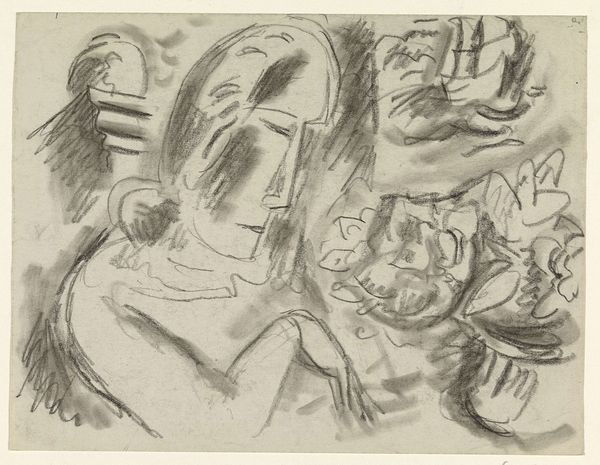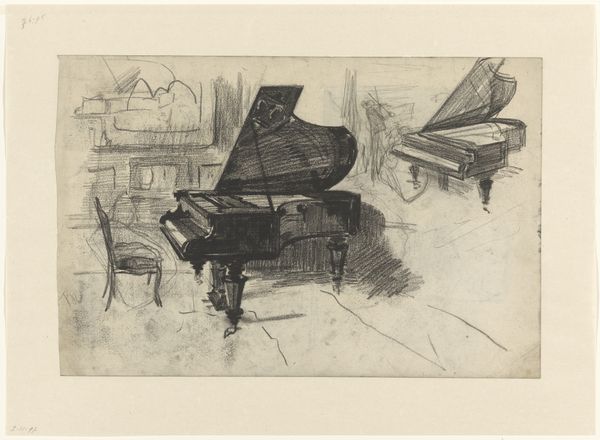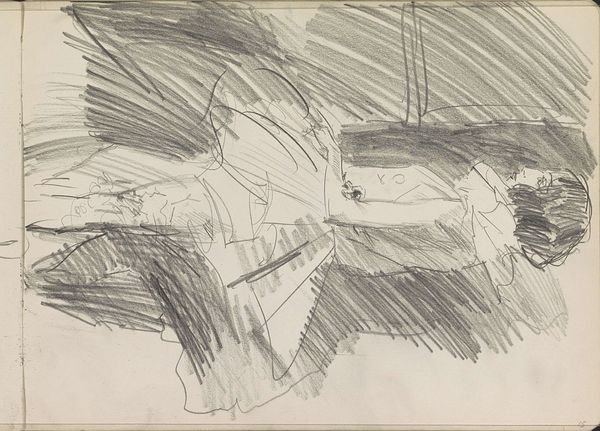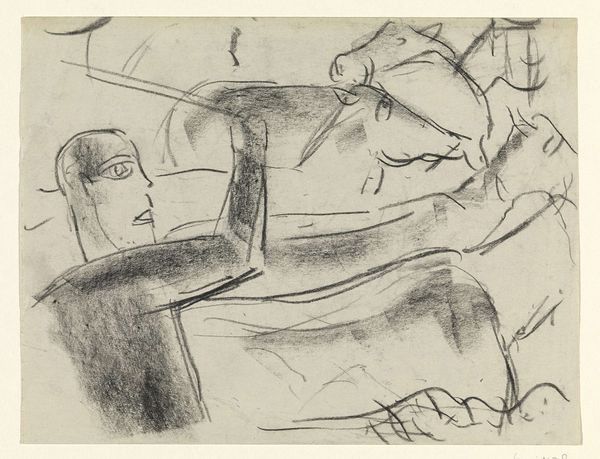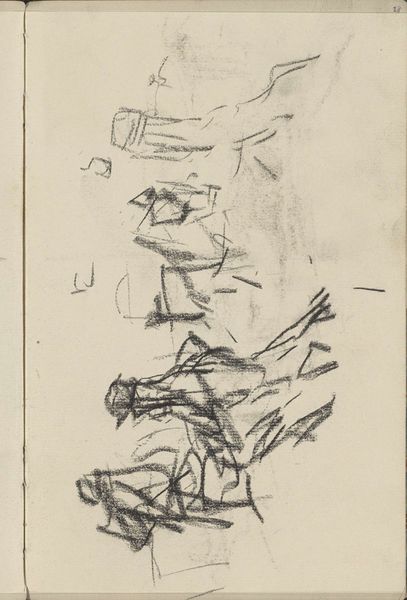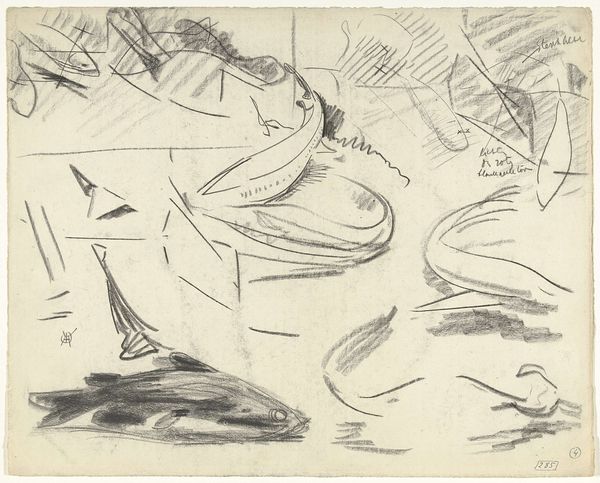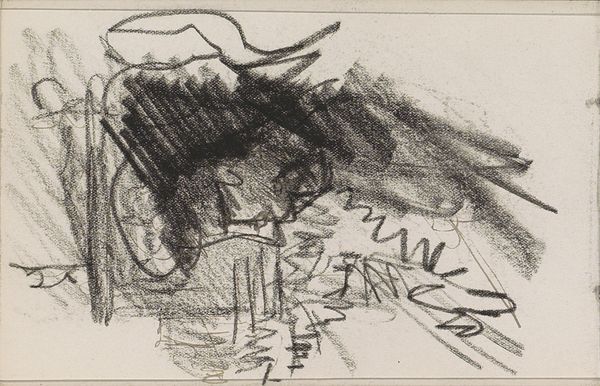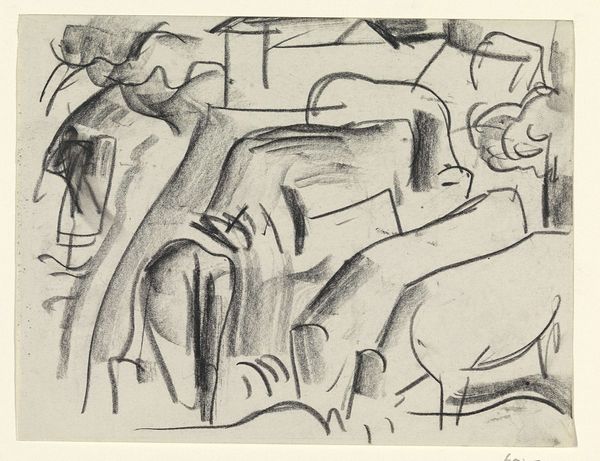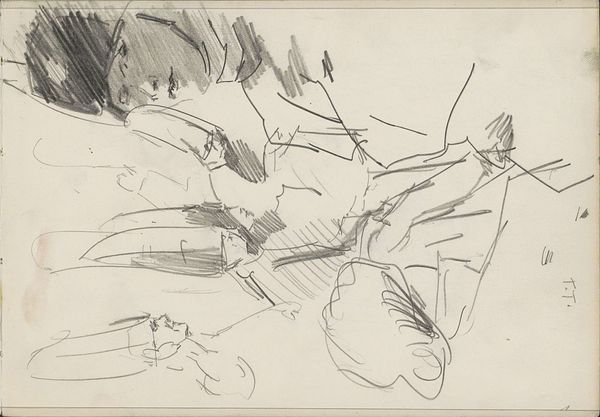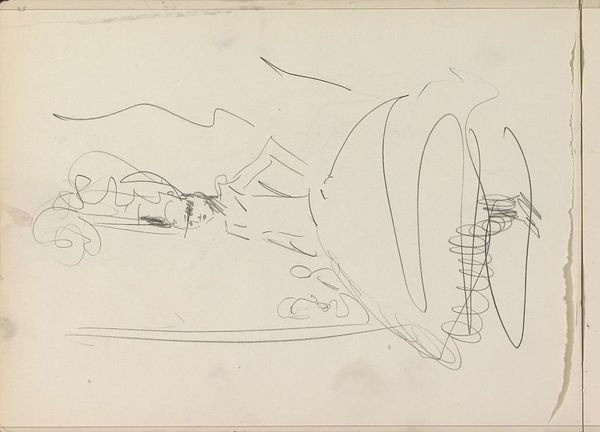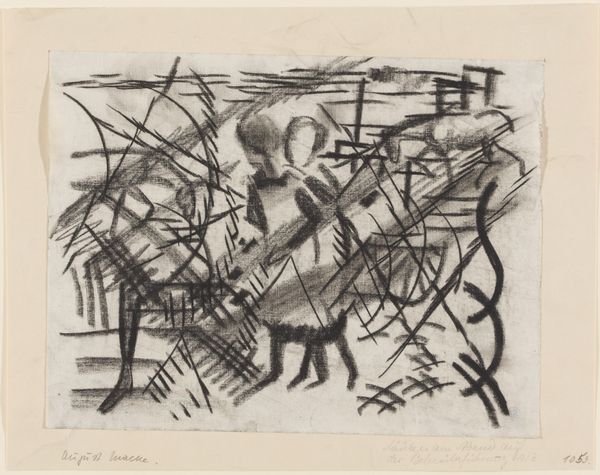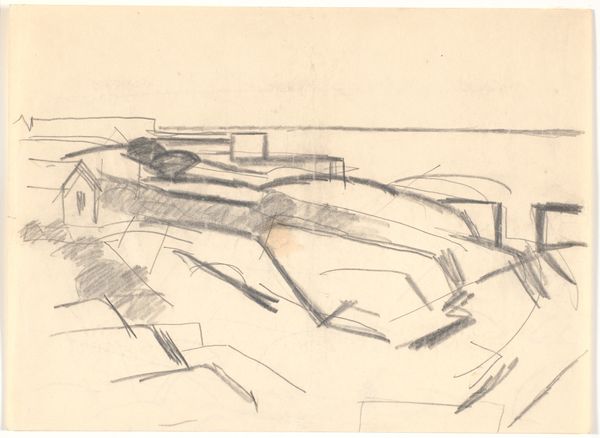
drawing, paper, ink
#
portrait
#
drawing
#
paper
#
ink
#
expressionism
Copyright: Public Domain
Curator: Ernst Ludwig Kirchner created this striking ink drawing, “Klemperer at the piano,” around 1915. It is currently held in the Städel Museum's collection. Editor: It looks like a fleeting moment, almost a musical phrase captured in ink. The stark contrast between the dark piano and the fragile lines that suggest Klemperer create a sense of both power and vulnerability. Curator: It's fascinating to consider the historical backdrop; Kirchner was working within the Expressionist movement, a period deeply affected by the looming shadow of World War I. Klemperer, a noted conductor, provides a grounding in the cultural life of the time. We see Expressionism reacting to rapid societal change with bold formal innovations. Editor: Yes, and one can't help but wonder about the artistic dialogue here. Kirchner, deeply embedded in the avant-garde, sketching Klemperer, an establishment figure in music. Are we seeing a bridge between worlds, or a study in contrasts during this intense period? How are they implicated in German cultural identity at the time? Curator: The choice of ink, its fluidity, lends immediacy to the work. The angularity in Klemperer’s form— the posture—almost gives a feeling of forced, uncomfortable, intensity, an attempt to tame the moment and put the subject onto paper, but inevitably the feeling is lost somewhat in the sketchiness of the line. It's a dynamic tension captured beautifully in monochrome. Editor: Right! The line itself is so important. How it defines Klemperer, and hints at his surrounding environment— all seem like fractured elements reflecting the tensions simmering within pre-war German society. The war influenced every creative project; its dehumanization led directly to artists creating highly personalized, emotionally charged, work, and Kirchner epitomizes this. Curator: Indeed. When you situate this drawing within Kirchner's broader oeuvre, you can see the socio-political role art played at that moment, from the urban alienation pieces in Dresden, to this portrait work. The artist engaged actively in what art can represent to the masses. Editor: And even how portraiture itself reflects shifts in how we see one another—how modernism changed that visual contract between artist, sitter, and the viewing public, which in turn mirrors our changing identities as people and communities in the world. It allows us to reconsider these familiar images from completely new viewpoints. Curator: The immediacy is so engaging here. I really get the impression of the artist capturing a likeness through a new method of looking. Editor: It is an interesting moment captured. We both, however, appear to arrive at the same feeling: what it reveals and reflects back to our perception of humanity then, and how that holds up, and what it says to us now.
Comments
No comments
Be the first to comment and join the conversation on the ultimate creative platform.
